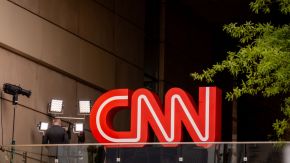U.S. companies added more jobs than expected in September, while activity in the vast services sector picked up, suggesting the economy remained on track for modest growth.
The ADP National Employment Report showed private employers added 162,000 jobs in September, more than economists expected, but fewer than the 189,000 hired in August.
Separate data from the Institute for Supply Management showed that new orders helped growth in the service sector to pick up to 55.1 in September, the best pace since March, from 53.7 a month earlier.
"It looks more like things are heading in the right direction. It is this new reality - we don't have robust growth, we just have very moderate growth," said William Larkin, fixed income portfolio manager at Cabot Money Management in Salem, Massachusetts.
The ADP report precedes the U.S. Labor Department's more comprehensive employment report due on Friday. That report includes both public and private sector employment and is expected to show job growth improved slightly last month.
Analysts often refer to the ADP report to fine-tune forecasts for the Labor Department's payrolls numbers, though the two reports may not always be in sync.
Over the past six months, the ADP report has exceeded the government's private payrolls numbers by an average of just over 50,000 according to Barclays. August's initial figures from ADP overshot by 98,000.
Some economists said Wednesday's data did not alter their forecasts, given the recent divergence.
The lackluster economic recovery and high unemployment rate have been a focal point of the U.S. presidential campaign leading up to the November elections.
A televised debate Wednesday night will provide President Barack Obama and Republican candidate Mitt Romney with the opportunity to challenge each other directly on economic issues.
The economy grew at just 1.3 percent in the second quarter and economists believe the recovery will remain sluggish, though it should avoid contraction.
"While the economy isn't plunging into recession, it still isn't creating enough jobs to drive the unemployment rate lower either," wrote Paul Ashworth, chief U.S. economist at Capital Economics.
The recovery has a number of factors to contend with, including a drag from the European debt crisis, slowing growth in China and domestic fiscal policy.
And some companies are deferring investment and hiring decisions amid uncertainty over whether Congress will act to change the hefty tax hikes and government spending cuts that are set to come into effect at the beginning of next year.
SMALL FIRMS HIRE
Small businesses - firms with fewer than 50 workers - added 81,000 new works, or half the jobs in September, according to ADP. Large companies with 500 or more workers added 17,000 jobs, while companies in the middle created 64,000 jobs.
The increase in private payrolls in August was revised down to 189,000 from a previously reported 201,000. July's rise was also revised down, to 156,000 from 173,000.
Last month, the Federal Reserve launched an aggressive new plan to bolster the economy, saying it will buy $40 billion in mortgage-backed securities per month until the outlook for the job market substantially improves and as long as inflation remains contained.
ISM's forward-looking new orders index jumped to 57.7 in September from 53.7 in August, but growth in employment eased to 51.1 from 53.8. Exports also slowed to 50.5 from 52.
Services firms - which range from agriculture to real estate companies - avoided the contraction that hit their manufacturing counterparts over the summer.
The resilience in the U.S. contrasted with data from abroad, which showed a slowdown in the euro zone service sector worsened last month, and China's services sector expansion slowed to nearly a two-year low.
Trading was choppy on Wall Street following the data, with U.S. stocks advancing modestly by midday. The dollar hit a fresh two-week high against the yen, and Treasuries prices weakened.
Separate data showed demand for mortgage refinancing surged more than 19 percent last week as interest rates tumbled to new record lows in the wake of the Fed's announcement of its latest stimulus plan, referred to by market watchers as "QE3."
More people were also looking to buy a home, with purchase applications rising nearly 4.0 percent.
"While we still think that QE3 will have only a small impact on the wider economy, this demonstrates that monetary policy isn't completely ineffective," said Ashworth.















